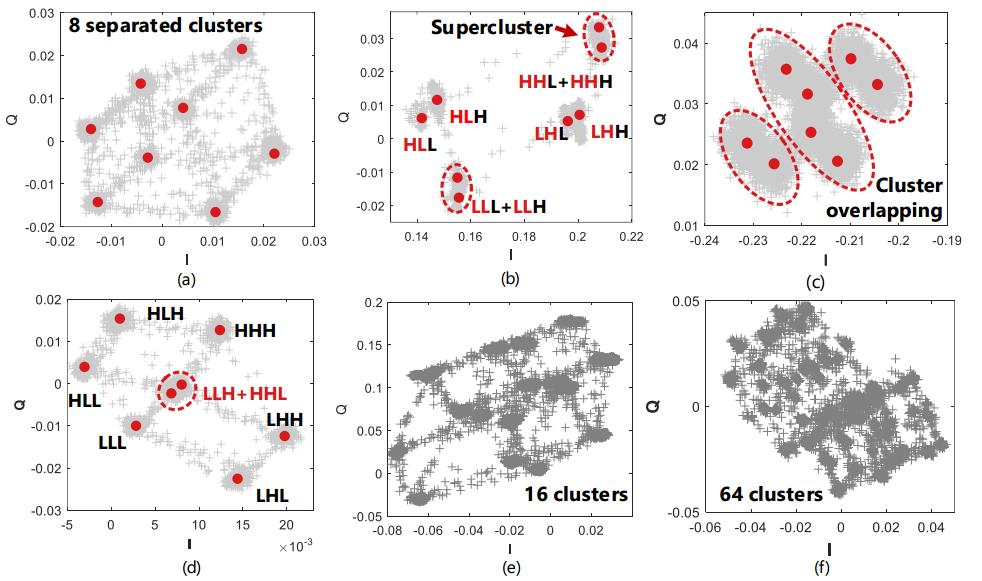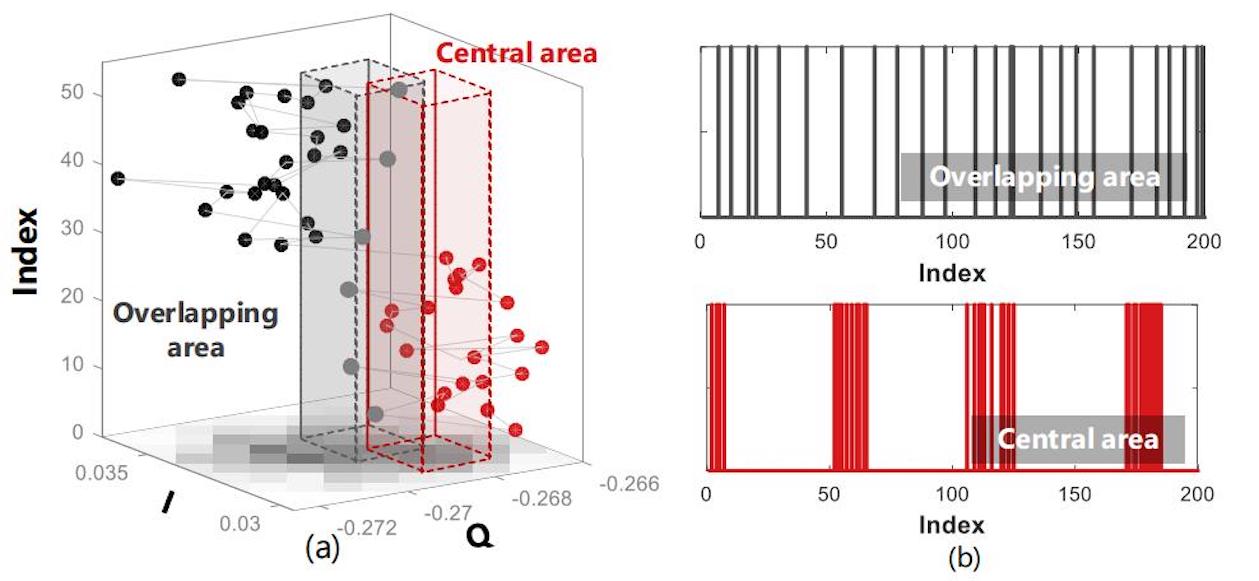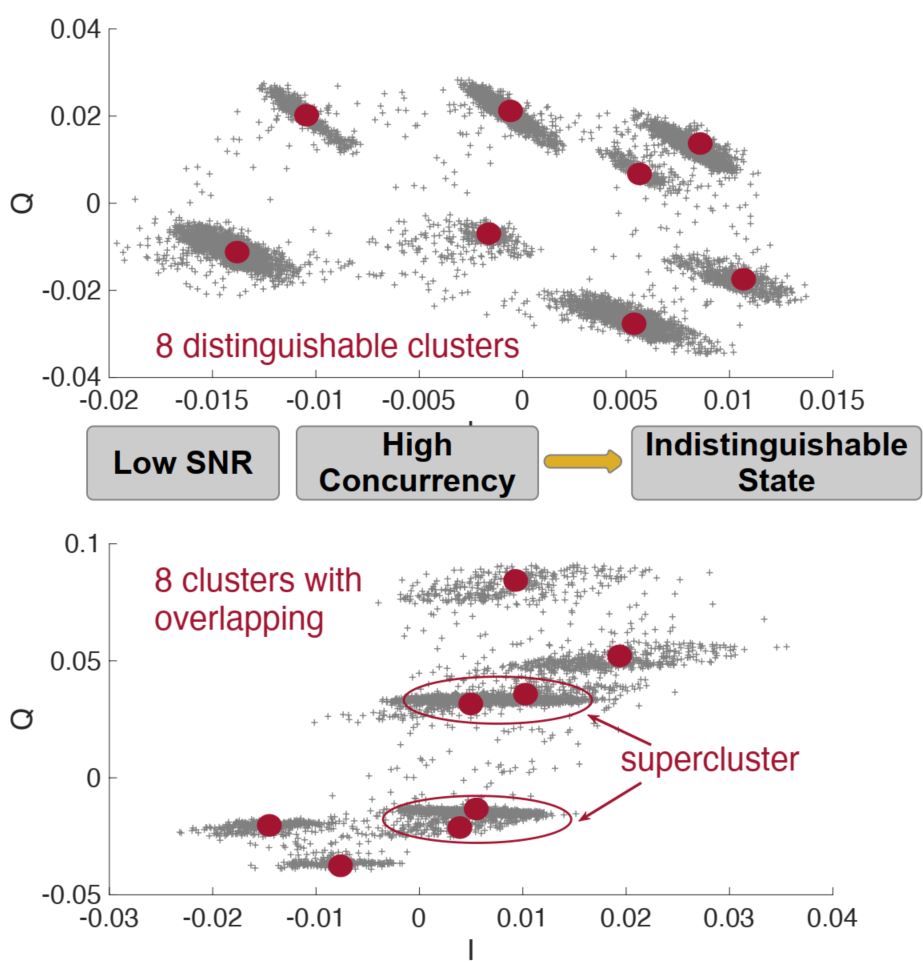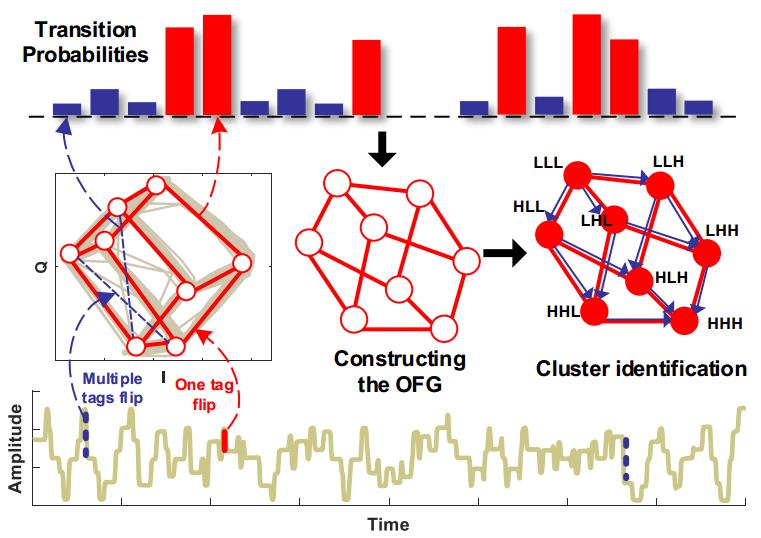Researches
Backscatter Communication
Acoustic Backscatter Network for Vehicle Body-in-White

ArachNet is a pioneering acoustic backscatter network designed to monitor the structural health of a vehicle’s Body-in-White (BiW) — the core metal frame of a car. Traditional wired or wireless sensors face challenges in such metallic environments due to weight, integration complexity, or signal interference. ArachNet solves this by turning the metal body itself into a medium for both energy and data transmission.
This system uses battery-free tags that harvest energy from vibrations and communicate via low-power acoustic backscatter, eliminating the need for wiring or batteries. We design ultra-low-power hardware and a novel distributed network protocol to support reliable, collision-free communication across many tags.
ArachNet has been deployed on a real electric SUV, demonstrating its ability to provide scalable, energy-efficient monitoring for smart vehicles and offering new possibilities for embedded sensing in harsh, enclosed environments.
This work appears in the proceedings of ACM SIGCOMM 2025.
Resources
QuinID: Enabling FDMA-Based Fully Parallel RFID with Frequency-Selective Antenna

Parallelizing passive Radio Frequency Identification (RFID) reading is an arguably crucial, yet unsolved challenge in modern IoT applications. Existing approaches remain limited to time-division operations and fail to read multiple tags simultaneously. In this paper, we introduce QuinID, the first frequency-division multiple access (FDMA) RFID system to achieve fully parallel reading. We innovatively exploit the frequency selectivity of the tag antenna rather than a conventional digital FDMA, bypassing the power and circuitry constraint of RFID tags. Specifically, we delicately design the frequency-selective antenna based on surface acoustic wave (SAW) components to achieve extreme narrow-band response, so that QuinID tags (i.e., QuinTags) operate exclusively within their designated frequency bands. By carefully designing the matching network and canceling various interference, a customized QuinReader communicates simultaneously with multiple QuinTags across distinct bands. QuinID maintains high compatibility with commercial RFID systems and presents a tag cost of less than 10 cents. We implement a 5-band QuinID system and evaluate its performance under various settings. The results demonstrate a fivefold increase in read rate, reaching up to 5000 reads per second. This work appears in the proceedings of ACM MobiCom 2025.
Resources
- Paper: QuinID: Enabling FDMA-Based Fully Parallel RFID with Frequency-Selective Antenna
- Project Resource: Open-source files
Satori: In-band Analog Backscatter for Audio Transmission

In IoT applications such as environmental monitoring and industrial security surveillance, audio sensors are increasingly deployed, among which wireless sensors are preferred. To enable continuous transmission, low-power wireless technologies like backscatter have been widely considered. However, existing backscatter systems face major challenges in audio transmission due to the high power consumption caused by the complex digital processing and fast frequency-shifting clocks. This paper presents Satori, the first in-band analog backscatter system for audio transmission with ultra-low power consumption. Satori eliminates the need for in-sensor digital processing by directly embedding analog audio voltages into backscattered WiFi symbols via analog modulation. It also reduces power overhead by transmitting audio within the band of the ambient WiFi signal, avoiding the need for energy-intensive frequency-shifting clocks. We implement the Satori prototype and evaluate it under various settings. The results show that Satori can transmit audio at a sampling rate of 41.67 kHz and achieve a signal-to-noise ratio exceeding 18 dB. This work appears in the proceedings of ACM MobiSys 2025 and was selected as a Best Paper Nominee.
Resources
- Paper: Satori: In-band Analog Backscatter for Audio Transmission
- Slides: Satori Slides
- Project Resource: Open-source files
Leggiero: Analog WiFi Backscatter with Payload Transparency

Backscatter is an enabling technology for battery-free sensing in today's Artificial Intelligence of Things (AIOT). Building a backscatterbased sensing system, however, is a daunting task, due to two obstacles: the unaffordable power consumption of the microprocessor and the coexistence with the ambient carrier's traffic. In order to address the above issues, in this paper, we present Leggiero, the first-of-its-kind analog WiFi backscatter with payload transparency. Leveraging a specially designed circuit with a varactor diode, this design avoids using a microprocessor to interface between the radio and the sensor, and directly converts the analog sensor signal into the phase of RF (radio frequency) signal. By carefully designing the reference circuit on the tag and precisely locating the extra long training field (LTF) section of a WiFi packet, Leggiero embeds the analog phase value into the channel state information (CSI). A commodity WiFi receiver without hardware modification can simultaneously decode the WiFi and the sensor data. We implement Leggiero design and evaluate its performance under varied settings. The results show that the power consumption of the Leggiero tag (excluding the power of the peripheral sensor module) is 30uW at a sampling rate of 400Hz, which is 4.8x and 4x lower than the state-of-the-art WiFi backscatter schemes. The uplink throughput of Leggiero is sufficient to support a variety of sensing applications, while keeping the WiFi carrier's throughput performance unaffected. This work appears in the proceedings of ACM MobiSys 2023.
Resources
- Paper: Leggiero: Analog WiFi Backscatter with Payload Transparency
- Slides: Leggiero Slides
- Project Resource: Source code and hardware schematic
RF-Transformer: A Unified Backscatter Radio Hardware Abstraction

This paper presents RF-Transformer, a unified backscatter radio hardware abstraction that allows a low-power IoT device to directly communicate with heterogeneous wireless receivers at the minimum power consumption. Unlike existing backscatter systems that are tailored to a specific wireless communication protocol, RF-Transformer provides a programmable interface to the micro-controller, allowing IoT devices to synthesize different types of protocol-compliant backscatter signals sharing radically different PHY-layer designs. To show the efficacy of our design, we implement a PCB prototype of RF-Transformer on 2.4 GHz ISM band and showcase its capability on generating standard ZigBee, Bluetooth, LoRa, andWi-Fi 802.11b/g/n/ac packets. Our extensive field studies show that RF-Transformer achieves 23.8 Mbps, 247.1 Kbps, 986.5 Kbps, and 27.3 Kbps throughput when generating standard Wi-Fi, ZigBee, Bluetooth, and LoRa signals while consuming 23–177× less power than their active counterparts. Our ASIC simulation based on the 65-nm CMOS process shows that the power gain of RF-Transformer can further grow to 187–3165×. We further integrate RF-Transformer with pressure sensors and present a case study on detecting foot traffic density in hallways. Our 7-day case studies demonstrate RF-Transformer can reliably transmit sensor data to a commodity gateway by synthesizing LoRa packets on top of Wi-Fi signals. Code and hardware schematics can be found at: https://github.com/LeFsCC/RF-Transformer. This work appears in the proceedings of ACM MobiCom 2022.
Resources
- Paper: RF-Transformer: A Unified Backscatter Radio Hardware Abstraction
- Slides: RF-Transformer Slides
- Project Resource: Source code and hardware schematic
Saiyan: Design and Implementation of a Low-power Demodulator for LoRa Backscatter Systems

The radio range of backscatter systems continues growing as new wireless communication primitives are continuously invented. Nevertheless, both the bit error rate and the packet loss rate of backscatter signals increase rapidly with the radio range, thereby necessitating the cooperation between the access point and the backscatter tags through a feedback loop. Unfortunately, the low-power nature of backscatter tags limits their ability to demodulate feedback signals from a remote access point and scales down to such circumstances. This paper presents Saiyan, an ultra-low-power demodulator for long-range LoRa backscatter systems. With Saiyan, a backscatter tag can demodulate feedback signals from a remote access point with moderate power consumption and then perform an immediate packet re-transmission in the presence of packet loss. Moreover, Saiyan enables rate adaption and channel hopping – two PHY-layer operations that are important to channel efficiency yet unavailable on long-range backscatter systems.We prototype Saiyan on a two-layer PCB board and evaluate its performance in different environments. Results show that Saiyan achieves 3.5–5X gain on the demodulation range, compared with state-of-the-art systems. Our ASIC simulation shows that the power consumption of Saiyan is around 93.2 μW. Code and hardware schematics can be found at: https://github.com/ZangJac/Saiyan. This work will appear in the proceedings of USENIX NSDI 2022.
Resources
- Paper: Saiyan: Design and Implementation of a Low-power Demodulator for LoRa Backscatter Systems
- Slides: Saiyan Slides
- Project Resource: Source code and hardware schematic
Aloba: Rethinking ON-OFF Keying Modulation for Ambient LoRa Backscatter

Backscatter communication holds potential for ubiquitous and low-cost connectivity among low-power IoT devices. To avoid interference between the carrier signal and the backscatter signal, recent works propose frequency-shifting technique to separate these two signals in frequency.
Such proposals, however, have to occupy the precious wireless spectrum that is already overcrowded, and increase the power, cost, and complexity of tag design. We revisit the classic ON-OFF Keying (OOK) modulation and propose Aloba, a backscatter system that takes the ambient LoRa transmissions as the excitation and piggybacks the in-band OOK modulated signals over the LoRa transmissions. Our design enables the backsactter signal to work in the same frequency band of the carrier signal, meanwhile achieving good tradeoff between transmission range and link throughput.
The key contributions of Aloba are: i) the design of a low-power backscatter tag that can pick up the ambient LoRa signals from other signals; ii) a novel decoding algorithm to demodulate both the carrier signal and the backscatter signal from their superposition. The design of ALoba completely unleashes the backscatter tag's ability in OOK modulation and achieves flexible data rate at different transmission range. Aloba can achieve 39.5--199.4 Kbps data rate at various distances. This work appears in the proceedings of ACM SenSys 2020.
Resources
- Paper: Aloba: Rethinking ON-OFF Keying Modulation for Ambient LoRa Backscatter
- Slides: Aloba Slides
- Project Resource: Source Code
Channel Estimation of Parallel Backscattered Signals

This project aims to ask a question: can we estimate the channel (phase and RSSI) of parallel backscattered signals? Answer to this problem has great significance in backscatter-based sensing applications, such as real-time tracking of multiple moving objects. Motivated by our observation that although channel parameters are distorted during collisions, the movements of the ON-OFF Keying modulated signal still preserve channel properties of the respective tags, we propose the first approach to estimate channels of parallel backscattered signals, called Fireworks. We model the relationship between the channel and the signal moving trajectory in the IQ domain and implement this design in our lab. The results show that Fireworks can estimate up to five channels in parallel. When applied to tracking applications, Fireworks achieves 4× improvement in tracking accuracy, compared with the state of the arts. This work appears in IPSN 2020.
Resources
Parallel decoding under low SNR scenarios


The existing approaches of parallel backscatter for backscatter communication are based on a common assumption that the states of the collided signals are distinguishable from each other in either the time domain or the IQ domain. We in this paper disclose the superclustering phenomenon, which invalidates that assumption and seriously affects the decoding performance. Then we propose an interstellar travelling model to capture the bursty Gaussian process of a collided signal. Based on this model, we design Hubble, a reliable signal processing approach to support parallel backscatter in the wild. Hubble addresses several technical challenges: (i) a novel scheme based on Pearson’s Chi-Square test to extract the collided signals’ combined states, (ii) a Markov driven method to capture the law of signal state transitions. Theoretically, Hubble is able to decode all the backscattered data, as long as the signals are detectable by the receiver. This work appears in MOBICOM 18.
Resources
Canon: A Multi-channel Parallel Backscatter Decoding Approach

Backscatter communication, due to its low energy consumption, attract a broad range of applications. The throughput of such low-power communication is however limited. Parallel backscatter is deemed as a promising technique for improving the overall throughput by enabling concurrent transmissions of the backscattering tags. The state-of-the-art approaches for parallel backscatter assume that all the states of the collided signals are distinguishable in the In-phase and Quadrature (IQ) signal plane. In this project, we disclose the superclustering phenomenon that makes the assumption untenable and significantly degrades the overall performance. Moreover, we observe that the indistinguishable states at different channels are not the same due to the intrinsic channel diversity. Motivated by the observation, we propose Canon, an approach that exploits the channel diversity of the backscatter tags for reliable parallel decoding. In Canon, we address two critical challenges: (i) designing the Multi-Carrier Backscatter (MCB) module to extract the collided signals simultaneously from multiple channels, (ii) designing the Multi-Channel Cluster Union (MCCU) algorithm to distinguish each state of the collided signals. Canon appears in IEEE ICNP 2018.
Resources
Parallel decoding for backscatter communication

Today, most Backscatter systems involve a large number of deployed tags to transmit large volumes of data. Therefore, how to fully utilize the channels and enhance network throughput turns to be a very important problem. To solve this problem, we present FlipTracer, a practical system that achieves highly reliable parallel decoding even in hostile channel conditions. FlipTracer is designed based on a key insight: although the collided signal is time-varying and irregular, transitions between signals’ combined states follow highly stable probabilities, which offers important clues for identifying the collided signals, and provides us with an opportunity to decode the collided signals without relying on stable signals. Our experimental results have shown that FlipTracer achieves a maximum aggregated throughput that approaches 2 Mbps, which is 6× higher than the state-of-the-art. This work appears in MOBICOM 17 and ToN.
Resources
- Paper: FlipTracer: Practical Parallel Decoding for Backscatter Communication
- Slides: FlipTracer Slides
- DataSet: Collided Signal